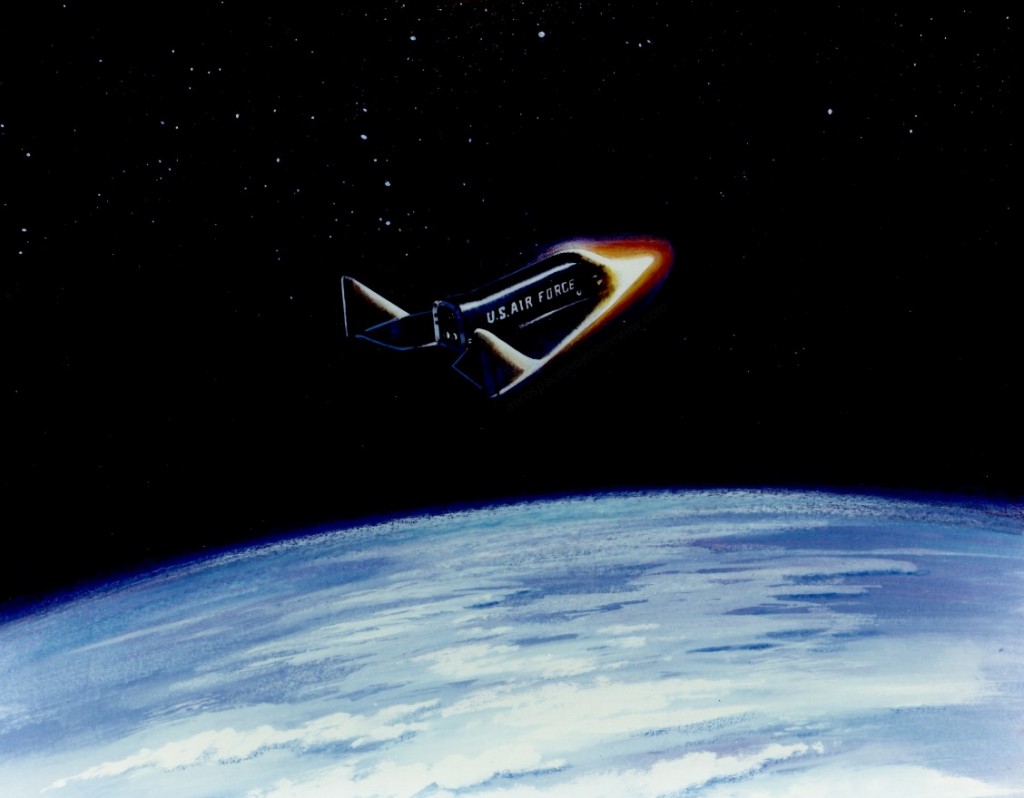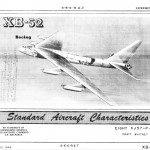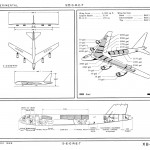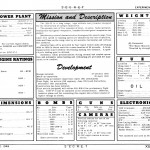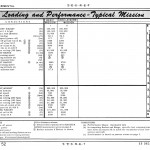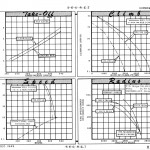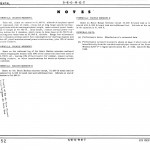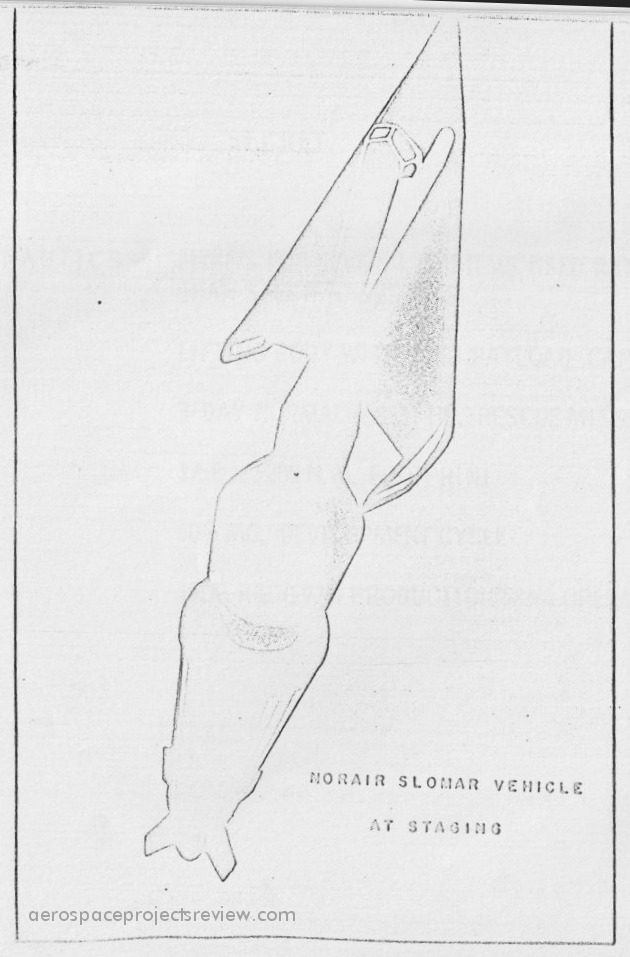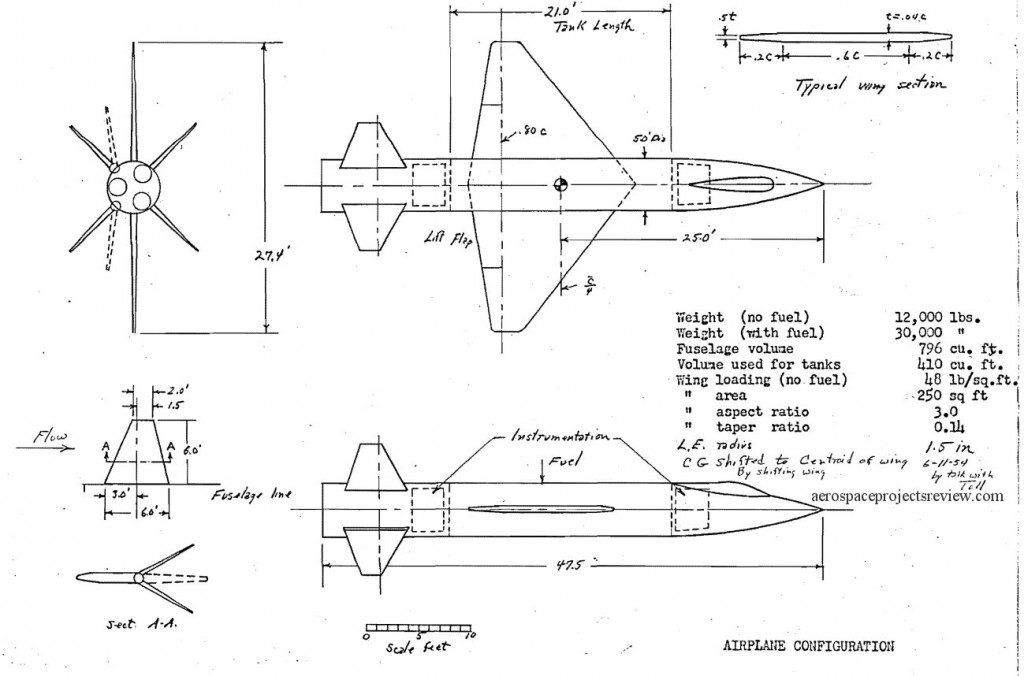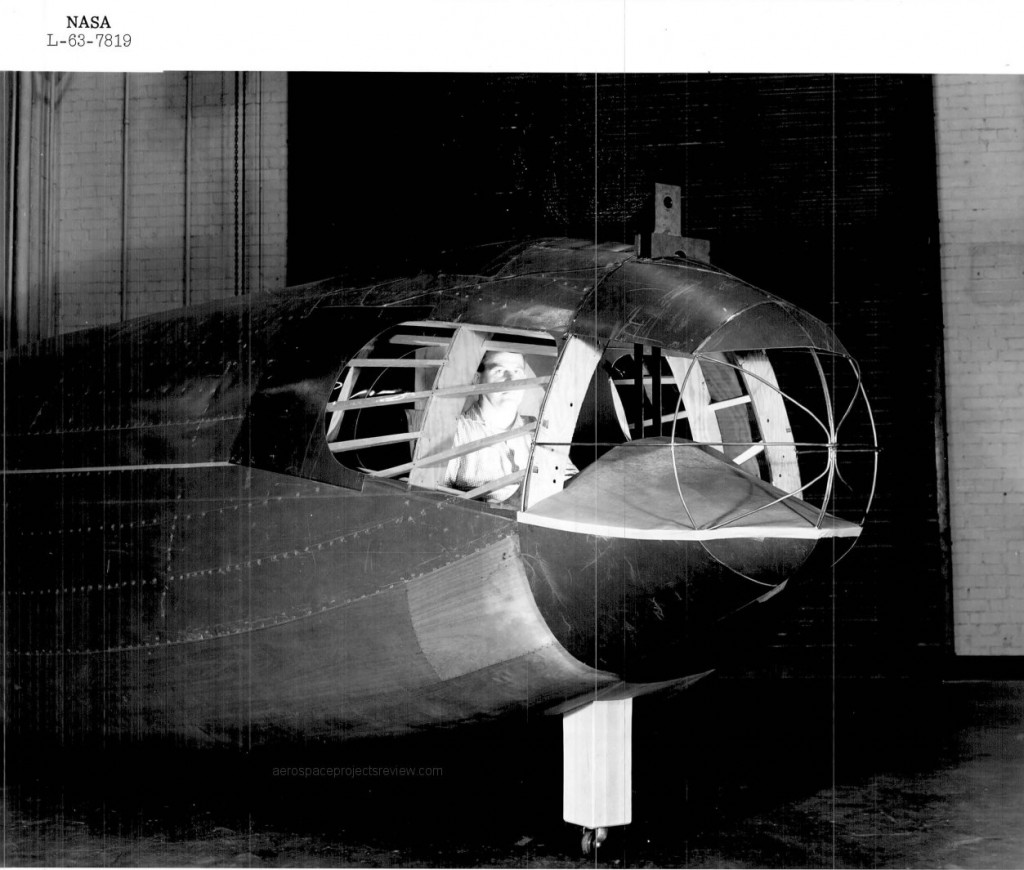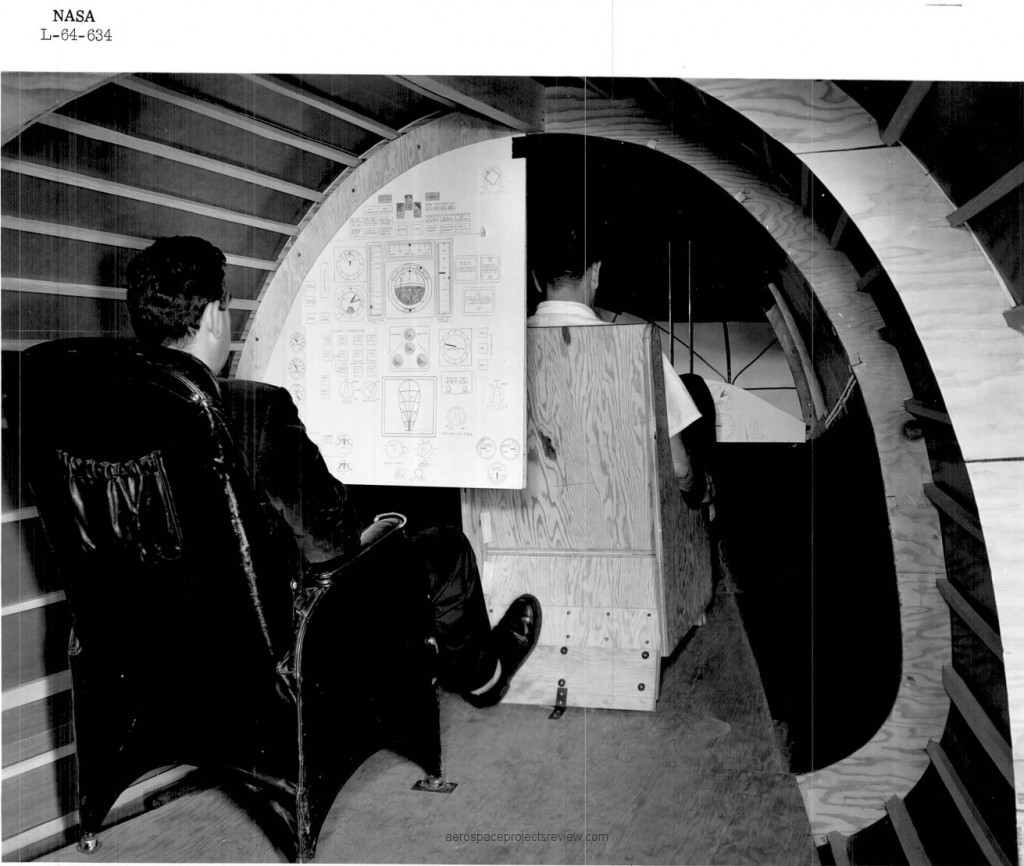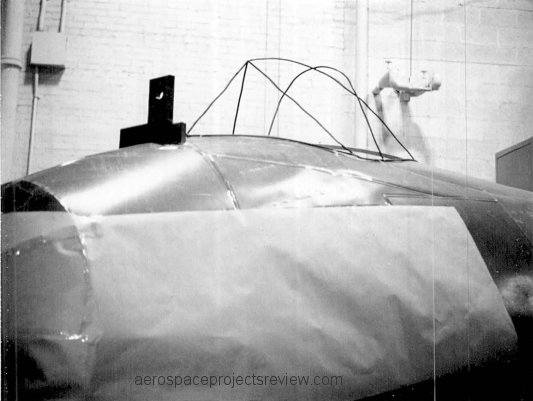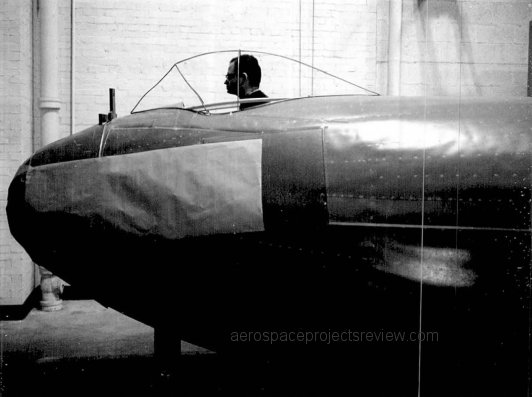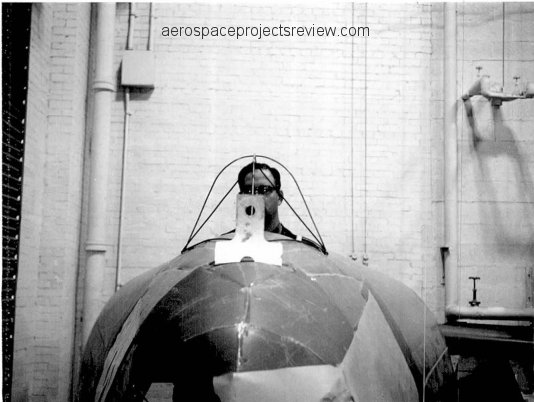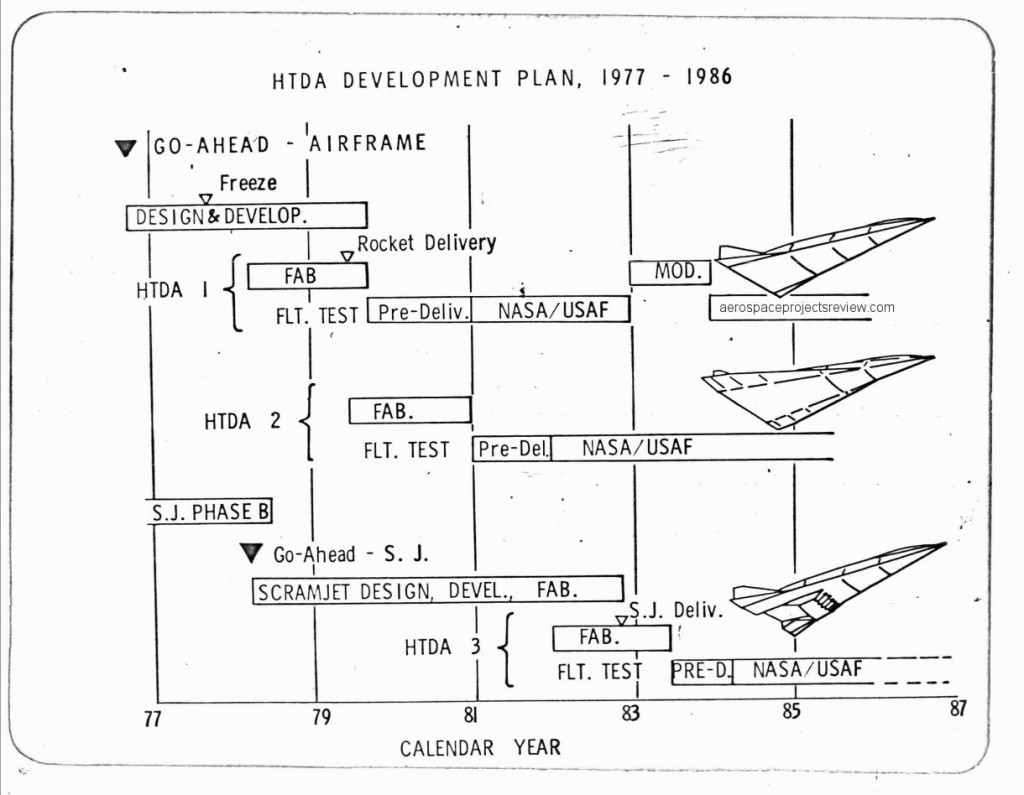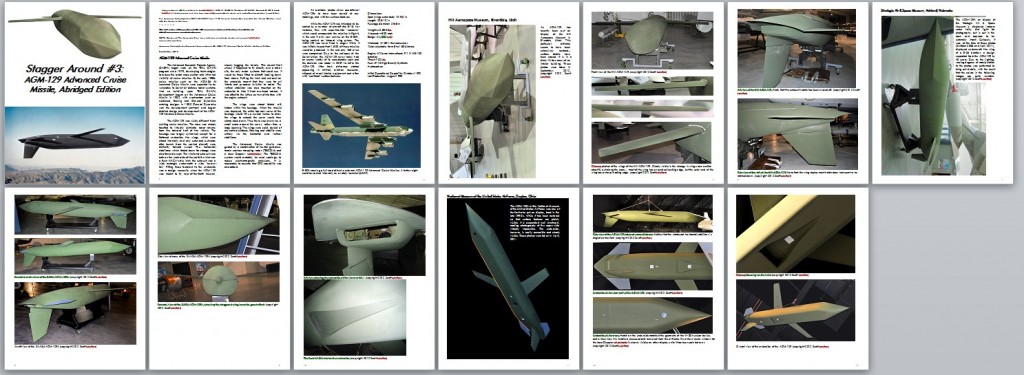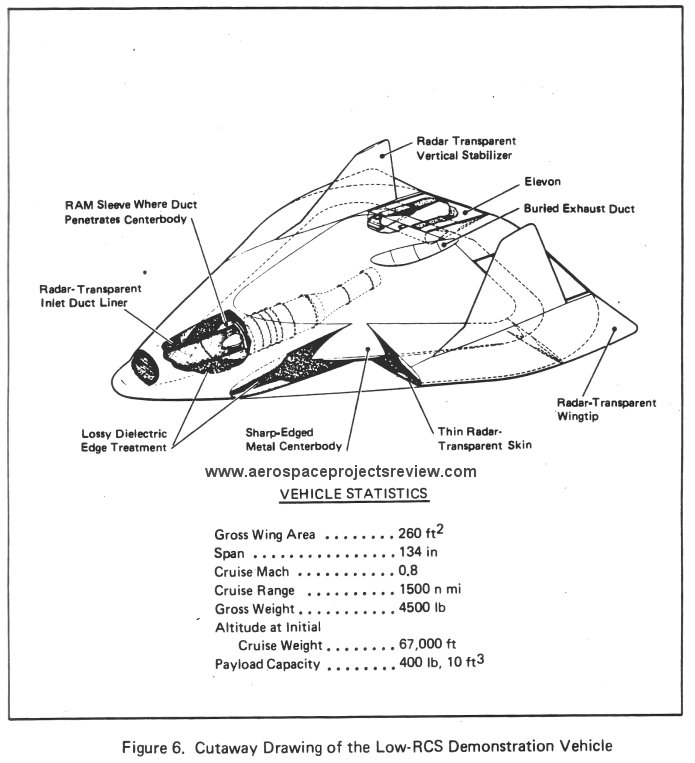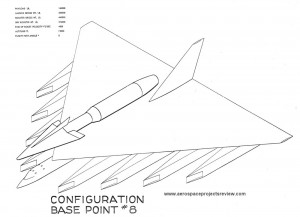A painting found at the NASA HQ archive some years back depicting a Dyna Soar re-entering the atmosphere. This was an earlier design, launched sub-orbitally rather than orbitally.
Standard Aircraft Characteristics sheets describing the Boeing XB-52 as of December 1949. This was not the B-52 as it was actually built… a number of design changes were yet to come. Most notable is that the wing is much closer to the nose. The cockpit in fact extends aft beyond the leading edge of the wing root.
SAC sheets used to be produced in large numbers to describe in concise form not only the aircraft the USAF was flying, but aircraft it was hoping to fly. These sheets would be produced by the USAF or by the contractors; contractors would often produce SACs describing conceptual or preliminary designs. There does not seem to have been a central clearinghouse for them… they were produced and distributed with no readily apparent rhyme or reason.
The quality is terrible, but apart from photos of a display model, this is the only illustration have of Northrop’s design for SLOMAR (Space LOgistics Maintenance And Rescue), a USAF program circa 1961 to study the sort of spacecraft that would be needed for crew and cargo transport to the space stations that everyone knew the USAF would have in some abundance by the end of the decade. The Northrop design is virtually identical in configuration to the Boeing Dyna Soar, though apparently a bit bigger.
This one, based on the same crude mockup, moved the pilot lower. It is much more like the HL-10 as actually built, with no disruptions to the basic lifting body mold line. It does have a quite different window arrangement, however.
Curiously, it seems that seating for more crew than just the pilot was considered. This indicates that this planning wasn’t just for a purely research vehicle, but an orbital vehicle intended to transport a crew.
From photos circa 1963-1964 show a full-scale NASA-Langley mockup of the forward nose section of the HL-10 lifting body shape. Incorporated into this was a framework showing a potential canopy configuration. This would clearly have been for a low-speed (non-orbital) test version, much like the HL-10 that was actually built.
A mid-1970’s graphic from the collection of a former NASA-Langley engineer shows the development schedule for “HTDA.” This I think stands for “Hypersonic Technology Development Aircraft,” and was to be a Mach 5+ airbreathing lifting body research plane that looks strikingly like the supposed “Aurora spyplane” that was so popular in the 1990’s. HTDA airframes 1 and 2 were most likely pure rocket vehicles, with a scramjet being integrated onto airframe 3.
Literally years in the making, I’ve put together two versions of a photo essay of several surviving examples of the AGM-129 Advanced Cruise Missile. Available free for the downloading is Stagger Around #3: AGM-129 Advanced Cruise Missile, Abridged Edition as a 13 page PDF booklet. This contains photos of the AGM-129s on display at Hill Aerospace Museum in Utah, the USAF Museum in Dayton and the Strategic Air & Space Museum in Nebraska, ready to print.
Also available is Stagger Around #3: AGM-129 Advanced Cruise Missile, Full Edition. This 34-page edition includes more photos of these missiles, along with the missile at the San Diego Aerospace Museum restoration facility, a rare General Dynamics display model, official USAF photos of the AGM-129 in test and in service and drawings of the missile, including 1/32 scale layout diagrams. This is available through MagCloud, either as a downloadable PDF ($5.75) or as a professionally printed and bound edition ($11.80).
Don’t forget to check out my other MagCloud publications, including Justo Miranda’s Reichdreams Dossiers, Aerospace Projects Review, Historical Documents, and Photographing Stuff.
And don’t forget to check out Stagger Around #1, F-104A Starfighter, and Stagger Around #2, Starship Enterprise.
A 1974 design by Teledyne Ryan for a stealthy remotely piloted vehicle While the general shape is certainly well within the norm for stealthy craft, the structure itself is quite different: it is basically a metal vehicle optimized for stealth, wrapped in a radar-transparent plastic skin optimized for aerodynamics. The only aspect of it that really seems to fail modern stealthy practices is the apparent straight shot in to the turbine face. From the Jay Miller collection.
The technology behind this was patented by Teledyne Ryan:
Aircraft of low observability
CORRECTION: This was originally posted as a TRW design, when in fact it was a Teledyne Ryan design. D’oh.
A 1959 Boeing concept for an airbreathing HTOL booster for Dyna Soar. Compared to the other pure-rocket VTO boosters, this would have been a monster… far bigger, far heavier, far, far more expensive. Which almost certainly explains why not only did such a booster not get serious study further down the line for Dyna Soar, it didn’t even rate detailed diagrams in the reports.
Staging would have been an interesting show.
NOTE: The isometric artwork for baseline concepts 4-7? Not available, sadly.
